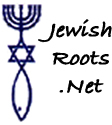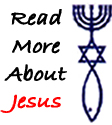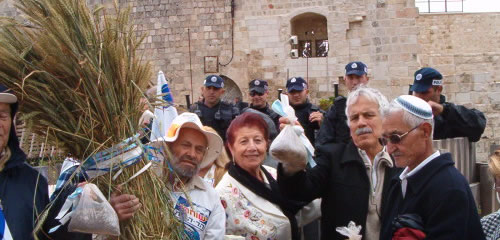






![]()
Counting of the Omer is a 49day period that is counted off each day (see description of holiday remarks below).
The holiday's Hebrew name is known as Sephirat Ha-omer.
"You shall count seven weeks for yourself; you shall begin to count seven weeks from the time you begin to put the sickle to the standing grain. Then you shall celebrate the Feast of Weeks to the Lord your God with a tribute of a freewill offering of your hand, which you shall give just as the Lord your God blesses you" (Deuteronomy 16:9-10).
Also see Exo. 16:36, Lev. 23:10-16.
On the second day of Passover, in the days of the Temple, an omer of barley was cut down and brought to the Temple as an offering.
 The Counting of the Omer counts the 49 consecutive days from the second day of Passover (Nissan 16) to Shavuot (Sivan 6). At the end of the 49th day, the counting is
over. The next day (sometimes called the 50th day of the counting of the Omer) is Shavuot (sometimes known as the Feats of Weeks or Pentecost). Pentecost gets its name from being day 50. Pentecost is a derivative of the Greek word meaning 50. Passover, the Counting of the Omer, and Pentecost are all chronological linked together. Pentecost on the Hebrew calendar is always 50 days from the second day of Passover.
The Counting of the Omer counts the 49 consecutive days from the second day of Passover (Nissan 16) to Shavuot (Sivan 6). At the end of the 49th day, the counting is
over. The next day (sometimes called the 50th day of the counting of the Omer) is Shavuot (sometimes known as the Feats of Weeks or Pentecost). Pentecost gets its name from being day 50. Pentecost is a derivative of the Greek word meaning 50. Passover, the Counting of the Omer, and Pentecost are all chronological linked together. Pentecost on the Hebrew calendar is always 50 days from the second day of Passover.
The counting is intended to remind Jewish people of the link between Passover, which commemorates the Exodus, and Shavu'ot, which commemorates the giving of the Torah. It reminds them that the redemption from slavery was not complete until they received the Torah.(1)
Some of the days during the counting process have special significance. Some are sad days because they reflect a time in Jewish history where bad things happened. Other omer days are considered joyous holidays of their own, because of more recent historical actions that are commemorated at that time.
Counting the Omer also gets its name because the counting must begin "from the day you brought the sheaf." Sheaf refers to a bundle of wheat. The word in Hebrew for "sheaf" is omer, so the period between Passover and Pentecost has become known as the omer - and the "countdown" is known as counting the omer.(2)
Most of the first 32 days of the omer are considered sad days and a mood of mourning is encouraged. The Talmud teaches that during this period of time (around 132 A.D.) , Rabbi Akiva's students were overcome with a fatal sickness or plague that killed approximately 24,000 of them. (This was, however, close to the time of the Bar Kochba revolt that Akiva was active in, leaving open the possibility of some of the students dying in battle).
There are other events in Jewish history that occurred during the Counting of the omer period that also contribute to a mood of mourning besides the deaths of Rabbi Akiva's students.
In the year 1096, Crusaders marched through the Rhine basin, mercilessly slaughtering Jewish men, women, and children. The worst bloodshed occurred between the first of Iyyar and Shavuot. The Jewish populace of Speyer was attacked on the eighth of Iyyar, and the communities of Mainz and Köln fell to the marauders during the week preceding Shavuot.(3)
Israel's Independence Day is usually celebrated on the 20th day of the counting of the omer (5th day of month of Iyar). This day is similar in meaning to July 4th in America.
Lag B'Omer is usually celebrated on the 33rd day of the counting of the omer (18th day of month of Iyar). This holiday reflects the day that the plague killed Rabbi Akiva's students ended. Picnics at parks are a common way to celebrate.
Jerusalem Day is usually celebrated on the 43rd day of the counting of the omer (28th day of month of Iyar). This is the day according to the Hebrew calendar that the Old City of Jerusalem was liberated during the 1967 Six-Day War.
The Omer offering is the offering of a measure of barley. An omer measurement is one tenth of an ephah (Ex.16:36), which usually is considered to be slightly more than two quarts. In the days of the second temple, an omer (sheaf) of barley would be brought as an offering and was waived in all directions. Barley was used because it was the earliest of cereal crops to be harvested. This symbolic act started the official recognition of the counting of the Omer. Israel would then begin to count the days to the Feast of Shavuot.
Some people read Psalm 67 on the last day of the omer, because its seven verses and 49 words match the seven weeks and 49 days of the omer period. Concluding the omer with this Psalm is a way to remind us that redemption is not complete without the word of God.(2)
Our knowledge of traditional dates used for the Counting of the Omer took on fascinating new dimensions with the publication by Prof. Yigael Yadin, in the 1970's, of the Temple Scroll, one of the most important of the Dead Sea writings.
In addition to the reliance on the 364-day calendar, common to the other scrolls, the Temple Scroll revealed before us an entire series of some four different 49-day "countings," extending throughout the summer months, each one terminating in a different festival of agricultural thanksgiving, not only for the barley, but also for the wheat, wine and (olive) oil. The centrality of the omer question to the world-view of the sect is thus seen to be more far-reaching than we had imagined, and it will probably be some time before we can understand its full significance.(3)
Today, in most cases, the actual counting does not involve the waiving of barley. Instead, the commandment is fulfilled as a daily recitation: "Today is the first day of the counting of the omer," and so on, until the 49 days of counting are complete.(4)
There is a proper way to count the Omer. The counting of the Omer is usually in both weeks and days. So on the 16th day, one would say "Today is sixteen days, which is two weeks and two days of the Omer."(1)
This is more of a time frame than a holiday. It is important because some Rabbis felt that Passover wasn't really over until the counting of the omer was over, and it was time to celebrate the giving of the law (Pesikta 30:163, Shir Hashirim Rabba 7).
Some believe that the 49 days correspond to the 49 letters in the Hebrew names of the twelve tribes of Israel.Special attractive calendars have been created to enhance the beauty of counting these days.
Messiah In The Counting Of The Omer Holiday:
![]() This is the time between Jesus crucifixion on Passover and the sending of the Holy Spirit on Pentecost. During this time, Jesus preached to spirits that were in prison (1 Pet. 3:19), came out of the tomb, showed his resurrected body to others, and ascended into heaven to sit at the right hand of the Father. At the end of this time, day 50, the comforter (Holy Spirit) was sent to those who were waiting for it (Acts Chapter 2). Day 50, Shavuot was also considered a First Fruits offering and on that day, we were offered the First Fruits of believing in Christ, which is the indwelling of the Holy Spirit.
This is the time between Jesus crucifixion on Passover and the sending of the Holy Spirit on Pentecost. During this time, Jesus preached to spirits that were in prison (1 Pet. 3:19), came out of the tomb, showed his resurrected body to others, and ascended into heaven to sit at the right hand of the Father. At the end of this time, day 50, the comforter (Holy Spirit) was sent to those who were waiting for it (Acts Chapter 2). Day 50, Shavuot was also considered a First Fruits offering and on that day, we were offered the First Fruits of believing in Christ, which is the indwelling of the Holy Spirit.
Jesus compared himself to a kernel of wheat in John 12:24:"I tell you the truth, unless a kernel of wheat falls to the ground and dies, it remains only a single seed. But if it dies, it produces many seeds."There is also a progressive theme during these days involving other holidays. First is the holiday known as Day Of Remembrance. This falls on the 19th day of the counting of the omer. We remember those that died.
Next is the holiday known as Day Of Independence. This falls on the 20th day of the counting of the omer. Here Israel celebrates her independence.
Then comes the holiday known as Day Of Jerusalem. This falls on the 43rd day of the counting of the omer. Here Israel celebrates the reunification of Jerusalem.
There is a messianic theme that fits for believers. First we remember and recognize Jesus' death. Then through our faith we become independent of the hold Satan had over us. We have at this point gained our freedom. Despite those two very big blessings, we still have another to look forward to: our reunification with Christ Jesus. After our death here, we will be together with him.
There is a connection between Passover and Pentecost. On Passover we were physically redeemed by the physical death of Jesus. On Pentecost our physical redemption was Spiritually empowered with the coming of the Holy Spirit.
 Known as Pesach Sheni when the Holy Temple was still standing, those who had become ritually impure would get a second chance to offer their Pascal sacrifice on the day. The 14th day of the month of Iyar.(Approximately day 29 of the counting of omer days 1-49 with day 50 being Pentecost).(5)
Known as Pesach Sheni when the Holy Temple was still standing, those who had become ritually impure would get a second chance to offer their Pascal sacrifice on the day. The 14th day of the month of Iyar.(Approximately day 29 of the counting of omer days 1-49 with day 50 being Pentecost).(5)
On April 16, 2006 the Temple Mount and Land of Israel Faithful Movement marched to the Temple Mount in Jerusalem, carrying with them the "Omer" harvest to the Temple Mount.
After 1936 years since the destruction of the Temple in Jerusalem G-d of Israel again saw His children, the children of Israel, marching to His holy mountain carrying with them the "Omer" to bring it to Him as an offering.(6)
Articles of interest include:
Perhaps it would be nice if we all had an Omer calendar. Jews could look forward to the giving of the law or first fruits, and Christians could celebrate the coming of the Holy Spirit in Acts Chapter 2. Perhaps you can count the days together with a Jewish family. On the 33rd day (Lag B'Omer), it is common to go to the park and cookout. Perhaps an invitation and some Kosher hot dogs could go a long way.
For a list of future holidays dates check the Master Calendar Table.
1). Midwest Messianic Center, June 2007 Newsletter.
2). Jews For Jesus Newsletter May 2010.
3). Eliezer Segal in his book Holidays History and Halakhah (used with permission).
4). The Messianic Times - May/June 2009.
5). Lubavitch Chabad of Peoria 5766 Jewish Art Calendar.
6). http://www.templemountfaithful.org/other.htm (8/11/06).
